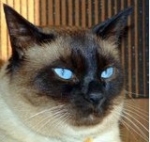Interesting stuff on flow limitations. I started on an S9 ASV machine a little less than two weeks ago and have been curious about what the flow limit chart means. My flow limitation graphs have quite a few peaks some nights. Compared to the Respironics 660 bipap I was using, the flow graphs are considerably smoother and more consistent. The machine tends to keep me breathing at a smooth, steady consistent rhythm. Looking at the charts, you can see it gets a workout to do so though. My Epap is set to 7 while the Ipap maxs out at 22 which on some nights it seems to do quite often. Other nights it might not max out at all.
I'll try and post some charts in the next day or so. In seeing what all this machine can do is quite interesting. My bipap could once in awhile get my AHI down under five, but things tended to average over 10. With the ASV machine I've had several nights of 0.0 with an occasional night up around 3 where it appears I have a 20 minute or so cluster of what appears to be Obstructives. During this, the IPAP chat shows I max out at 22, flow limitation chart looks rough as well. I'm assuming I roll over on my back to trigger these, but fortunately I rarely spend any significant time on my back as I would generally wake up if I did so prior to my hose head days.
definition of flow limitation
Re: definition of flow limitation
Well, we can rule out Swift FX pillows as a factor in causing flow limitations. I used a nasal mask instead last night. No change in the strong, frequent FL's. Very interesting topic though. Will read more.
Papit wrote:Avi, see my replies embedded below:avi123 wrote:Papit, on what mode was the S9 VPAP Adapt set when you took the above graphs? [Regular ASV mode, not the AutoASV mode]
From the following two graphs I can see that you had about 30 FL events during the 5 hours. [Yep, actually more are seen when I zoom in on the bold spikes. And most are strong/maximum height. During the preceding year with the S9 AutoSet, I hardly had any flow limitations and those I had were very weak.
Your respiration rate counts to about 12 per min which is normal.
Many of the respiration waves have flat tops (not sinusoidal), manifesting FL.
Do you have any anatomical malformation in your nose or mouth to cause this FL, such as deviated septum, large tonsils? [I think my septum is ok. My tonsils were removed as a child. An ENT saw nothing. My lungs recently tested good. No emphazima or asthma. No allergies either.]
The nasal pillows mask could also cause FL. Do you have another type of mask for a trial? [Good idea. I'll try a FFM tonight and let you know tomorrow.] Thanks.
_________________
| Mask: DreamWear Nasal CPAP Mask with Headgear |
| Additional Comments: Machine: AirCurve 10 ASV (37043), Software:ResScan 5.7.0.9477, SleepyHead V1.00BETA2, Oximeter:CMS-50i |
Machine: AirCurve 10 ASV, Mask: AirFit N30i
PulseOx Data-transfer to OSCAR4-23-12http://tinyurl.com/nzd64gu
Wireless SD Card Data-transfer to OSCAR 8-14-15http://tiny.cc/z1kv8x
PulseOx Data-transfer to OSCAR4-23-12http://tinyurl.com/nzd64gu
Wireless SD Card Data-transfer to OSCAR 8-14-15http://tiny.cc/z1kv8x
Re: definition of flow limitation
This leaves us with -SWS past post:
"This is an exercise in applying heuristic judgment to validate/invalidate Rescan's FL scoring. The algorithmic artifact (or interpretive scoring error) that John {Fisher} spoke of stands to show up in the FL graph---not the raw flow graph. Why? The "flow limitation" graph reflects Rescan's algorithmic scoring or interpretation. By contrast the raw "flow" graph reflects unscored measurement. So the idea here is for Papit to examine his unscored flow graph at 1-minute resolution, in an attempt to validate or invalidate Rescan's FL scoring.
When we see significant flattening, one or more shoulders, or other distinct deviation from rounded sinusoid on the flow measurement graph, then we're looking at some kind of obstructive narrowing rather than central phenomena. Residual or even iatrogenic breathing phenomena are not always worrisome. Recall that periodic breathing, central apneas, obstructive apneas, flow limitations, hypopneas, etc. all occur with subclinical frequency/severity in the "normal" non-SDB population.
So if Papit's sleep and daytime symptoms are much improved, then a little residual or even iatrogenic FL here and there might be nothing more than benign."
"This is an exercise in applying heuristic judgment to validate/invalidate Rescan's FL scoring. The algorithmic artifact (or interpretive scoring error) that John {Fisher} spoke of stands to show up in the FL graph---not the raw flow graph. Why? The "flow limitation" graph reflects Rescan's algorithmic scoring or interpretation. By contrast the raw "flow" graph reflects unscored measurement. So the idea here is for Papit to examine his unscored flow graph at 1-minute resolution, in an attempt to validate or invalidate Rescan's FL scoring.
When we see significant flattening, one or more shoulders, or other distinct deviation from rounded sinusoid on the flow measurement graph, then we're looking at some kind of obstructive narrowing rather than central phenomena. Residual or even iatrogenic breathing phenomena are not always worrisome. Recall that periodic breathing, central apneas, obstructive apneas, flow limitations, hypopneas, etc. all occur with subclinical frequency/severity in the "normal" non-SDB population.
So if Papit's sleep and daytime symptoms are much improved, then a little residual or even iatrogenic FL here and there might be nothing more than benign."
_________________
| Humidifier: S9™ Series H5i™ Heated Humidifier with Climate Control |
| Additional Comments: S9 Autoset machine; Ruby chinstrap under the mask straps; ResScan 5.6 |
Re: definition of flow limitation
Thanks for recalling -SWS's earlier post. My thoughts are inserted below.





avi123 wrote:This leaves us with -SWS past post:
"This is an exercise in applying heuristic judgment to validate/invalidate Rescan's FL scoring. The algorithmic artifact (or interpretive scoring error) that John {Fisher} spoke of stands to show up in the FL graph---not the raw flow graph. Why? The "flow limitation" graph reflects Rescan's algorithmic scoring or [mathematical] interpretation. By contrast the raw "flow" graph reflects unscored measurement. So the idea here is for Papit to examine his unscored flow graph at 1-minute resolution, in an attempt to validate or invalidate Rescan's FL scoring. [Makes sense. Agreed.]
"When we see significant flattening, one or more shoulders, or other distinct deviation from rounded sinusoid on the flow measurement graph, then we're looking at some kind of obstructive narrowing rather than central phenomena. [Yes, significant deviation from rounded sinusoidal inspiratory flow wave shape. Thus, it should not be difficult to examine and identify deviations (by inspection) from the 'normal' rounded sinusoid shape.] Residual or even iatrogenic breathing phenomena are not always worrisome. Recall that periodic breathing, central apneas, obstructive apneas, flow limitations, hypopneas, etc. all occur with subclinical frequency/severity in the "normal" non-SDB population. [Ok, but what if the occurrences of such breathing "phenomena" wave shape deviations are not "residual" in that they may occur (for some of us here) in great quantity; i.e., almost as frequently as normal sinusoidal wave forms occur? See below for several Flow periods sampled from last night's sleep. I selected these samples in a uniform periodic fashion to cover the entire sleep and avoid initial bed time and rise time: five equally spaced hourly intervals beginning at 4:30 am. Virtually 40% (averaged) of all wave forms, appearing at 1-minute resolution in each hourly sample, were deformed. Each such wave shape deviation is identified below by its basic deformity characteristic. ]
"So if Papit's sleep and daytime symptoms are much improved, then a little residual or even iatrogenic FL here and there might be nothing more than benign." [As I view the samples below, the wave form deviations appear to be commonplace rather than "here and there" or "residual." It makes me wonder whether, if they can somehow (pardon my musing) be smoothed out, might one's daytime alertness be dramatically sharpened. Most of us recognize that AHI numbers alone are not a magic solution for daytime symptoms. My sleep quality is gradually improving and the machine is said to be designed with 'learning' capability to improve treatment effectiveness over time. My daytime sleepiness remains flat after two months on ASV but might well improve in time. I am also planning to soon try the Adapt's AutoASV mode. It is described by ResMed briefly in its literature as having an algorithm that is apparently more definitively a function of flow limitation than the one for the standard ASV mode.]





_________________
| Mask: DreamWear Nasal CPAP Mask with Headgear |
| Additional Comments: Machine: AirCurve 10 ASV (37043), Software:ResScan 5.7.0.9477, SleepyHead V1.00BETA2, Oximeter:CMS-50i |
Machine: AirCurve 10 ASV, Mask: AirFit N30i
PulseOx Data-transfer to OSCAR4-23-12http://tinyurl.com/nzd64gu
Wireless SD Card Data-transfer to OSCAR 8-14-15http://tiny.cc/z1kv8x
PulseOx Data-transfer to OSCAR4-23-12http://tinyurl.com/nzd64gu
Wireless SD Card Data-transfer to OSCAR 8-14-15http://tiny.cc/z1kv8x











